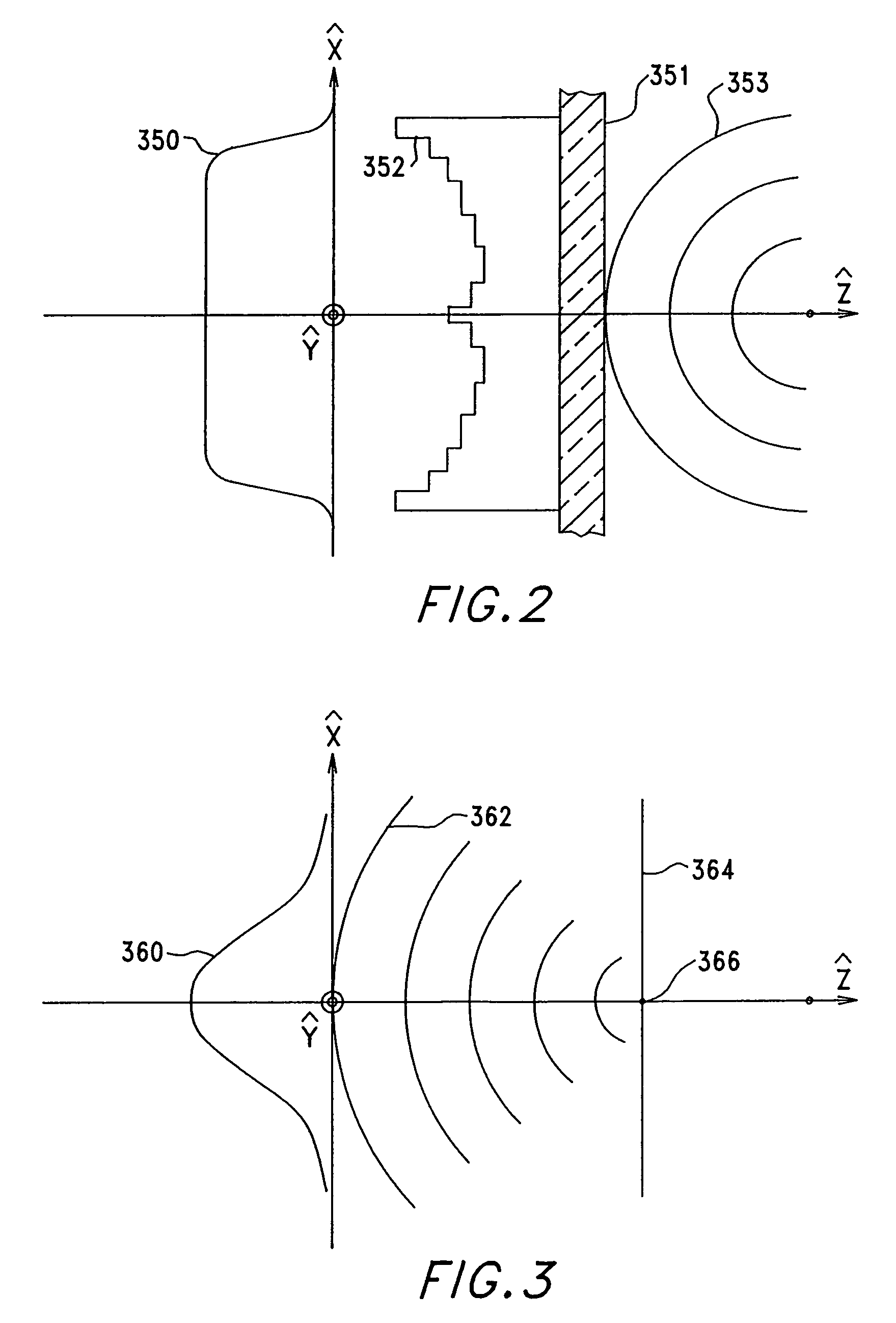Power scalable optical systems for generating, transporting, and delivering high power, high quality laser beams
a laser radar and optical system technology, applied in the direction of laser details, active medium shape and construction, electrical equipment, etc., to achieve the effect of minimizing or eliminating potential optical damage to the waveguide and achieving the desired beam quality and capability
- Summary
- Abstract
- Description
- Claims
- Application Information
AI Technical Summary
Benefits of technology
Problems solved by technology
Method used
Image
Examples
embodiment 70
[0109]As explained above, spatially coherent, lower order super-Gaussian, beams are particularly desirable for the power scalable, rectangular, self-imaging, waveguide optical systems of this invention, because they can have more light energy than common TEM00 Gaussian beams of similar size, and they can be adapted to utilize more fully the rectangular cross-section of rectangular waveguides, especially one-dimensional rectangular waveguides. For example, waveguides with thicknesses in the range of 100 μm to 1 cm or more combined with a super-Gaussian beam can be scaled up to produce and / or transport the high power levels discussed above according to this invention. A preferred example very high peak power self-imaging waveguide according to this invention is a 1 cm×1 cm core with a lower order super-Gaussian beam. A spatially coherent, lower order super-Gaussian beam 12 for focusing on a rectangular input aperture 26, such as that shown in FIG. 4, can be provided by amplitude or ph...
embodiment 40
[0111]The high-power optical amplifier 10 of this invention shown in FIG. 4 and described above is one simple embodiment illustrating the use of a multi-mode, rectangular, re-imaging waveguide with a core comprising a gain or mixing medium for amplifying a light beam 12 or mixing with other beams. There are, of course, many other useful amplifier configurations and embodiments that will occur to persons skilled in the art, once they understand the principles of this invention. For example, as shown in FIG. 9, a double-pass optical amplifier embodiment 40, in which the light beam 42 being amplified is passed twice through the rectangular, multi-mode, self-imaging, waveguide 50 to thereby extract even more energy from the gain medium in the waveguide core 52. In this example, the gain medium that comprises the core 22, such as Nd:YAG, is pumped with light energy 64 with, for example, a laser diode 60 coupled into the core 22 by a lens focusing system 59, which focuses the light 64 pro...
embodiment 400
[0173]An alternate, grating window, embodiment 400 can be used in place of the window 380 in the sidewall launch aperture 306 to provide steering of the output beam 340, as illustrated diagrammatically in FIG. 1, and as 340′ and 340″ in FIGS. 24a–c. With initial reference to FIG. 24, a small portion of a grating window 400 is shown in an enlarged cross-section. Essentially, the grating window 400 can be any diffraction outcoupler embodiment, as explained above, but in a grating format. Fixed and programmable diffractive incouplers / outcouplers can be achieved via processes, such as (i) liquid crystals; (ii) semiconductor gratings—either etched or electrically programmable; (iii) photorefractive gratings—either electrically or optically written; (iv) photochromic and / or electrochromic gratings; or (v) etched relief gratings. Moreover, the diffractive grating structure can be curved, linear, chirped, or any combination of these features.
[0174]An example grating window 400 is similar to...
PUM
 Login to View More
Login to View More Abstract
Description
Claims
Application Information
 Login to View More
Login to View More - R&D
- Intellectual Property
- Life Sciences
- Materials
- Tech Scout
- Unparalleled Data Quality
- Higher Quality Content
- 60% Fewer Hallucinations
Browse by: Latest US Patents, China's latest patents, Technical Efficacy Thesaurus, Application Domain, Technology Topic, Popular Technical Reports.
© 2025 PatSnap. All rights reserved.Legal|Privacy policy|Modern Slavery Act Transparency Statement|Sitemap|About US| Contact US: help@patsnap.com



